11 Birds That Chirp at Night in Kentucky (with Pictures)
Last Updated on
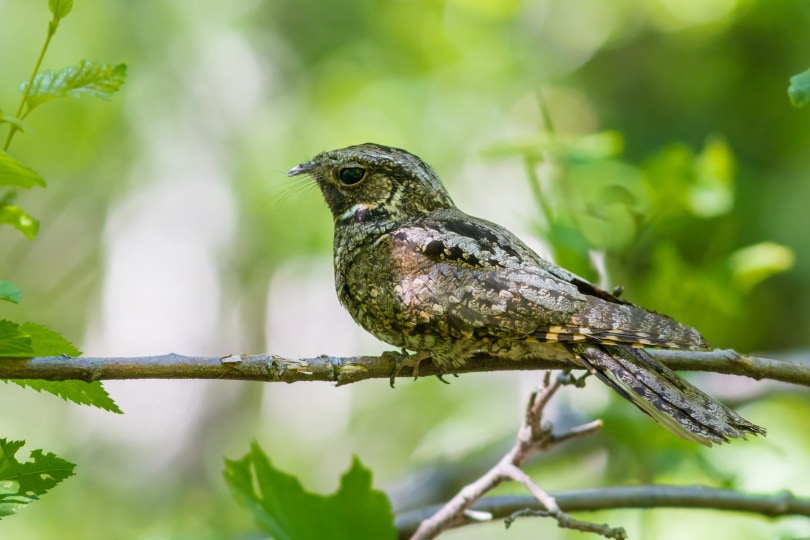
The usual morning ritual of birds includes singing in sweet melodious voices. They are typically the representation of dawn since that’s when they are the most vocal. But did you know that there are birds that sing and chirp at night?
If you live in Kentucky, you may have heard the mesmerizing chirping of birds when it gets dark. Some birds are naturally nocturnal, meaning they are the most active at night. Meanwhile, other bird species, such as Northern Mockingbirds, are active in the daytime but sing at night to search for partners.
At night, there is minimal noise, so the chirping of these birds creates a unique but eerie experience for the listeners. But what birds chirp at night? Here is a list of 11 chirping birds in Kentucky:

The 11 Birds That Chirp at Night in Kentucky
1. Eastern Whip-poor-will

| Type | Nocturnal |
| Singing style | Calls |
| Conservation status | Threatened |
The Eastern Whip-poor-will is a nocturnal bird that is mainly listened to than seen. These birds aren’t songbirds, but their iconic calls have mesmerized many birdwatchers. The males are mostly seen singing during breeding, particularly on spring and summer nights.
The chirps and calls of Eastern Whip-poor-wills are also heard in southeastern US areas, such as Kentucky.
They are widespread in the wooded regions of the country. But unfortunately, their populations have declined significantly over the past five decades. As a result, it is now a part of the State of North America’s Birds Watch List with a concern score of 14 out of 20.
Head towards wooded areas in Kentucky to listen to the beautiful calls of an Eastern Whip-poor-will before they become distinct.
2. Black Rail

| Type | Nocturnal |
| Singing style | Pipe-like sound |
| Conservation status | Threatened |
The Black Rail is a rare swap bird spotted in the Southeastern US regions, including Kentucky, coastal Texas, and the Caribbean parts of South America. These birds make a unique song-like call that sounds like “ki-ki-kooo.”
At night, you can hear them making repetitive calls in a pipe-like tone. Due to their reserved nature, you’re more likely to listen to their song than identify them at night. They are primarily found in semi-aquatic places, such as swamps, marshes, and wet meadows.
However, unfortunately, Black Rails are threatened or endangered birds, with a score of 17 out of 20 on the Watch List. That’s the highest of all the chirping birds on this list.
3. Yellow-breasted Chat

| Type | Non-nocturnal |
| Singing style | Clucks, whistles, and hoots |
| Conservation status | Stable but near threatened |
The Yellow-breasted Chat sings in a beautiful combination of whistles, cackles, hoots, and clucks. These are non-nocturnal birds, meaning they are active during the daytime. But surprisingly, they do sing at night in the spring season when breeding.
Many people confuse the songs of Yellow-breasted Chats with mocking laughter. So, whenever you visit thickets, shrubs or any other dense areas in Kentucky, listen closely to a similar type of song to spot these birds.
Unfortunately, their population has declined by 37% in the past five decades. It has a 10 score on the Watch List, making it a threatened or of special concern bird species in many US states.
4. Barred Owl
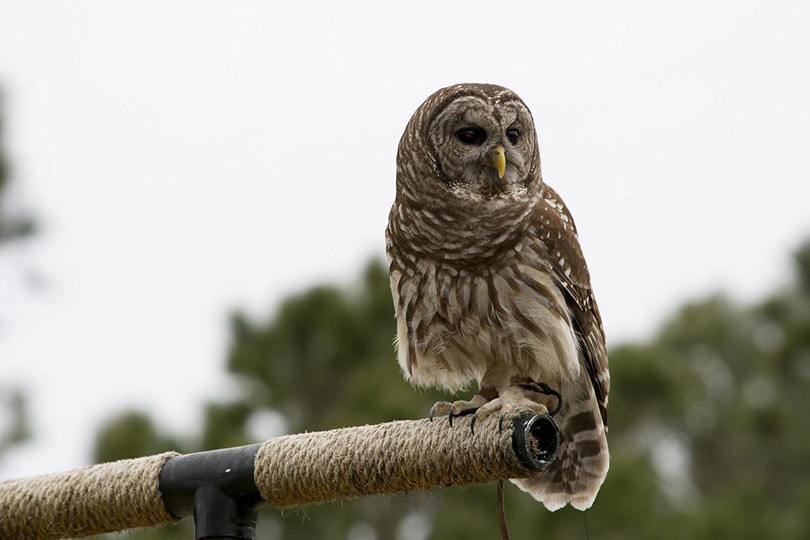
| Type | Nocturnal |
| Singing style | Hoots, gurgles, cackles, and caws |
| Conservation status | Stable |
If you’re a Kentucky resident, you may already be familiar with the iconic “who-cooks-for-you” calls of Barred Owls at night. These are the most popular nighttime sounds across the US, especially in Kentucky.
During the breeding season, Barred Owls combine a few different sounds with the hoots. These include caws, cackles, and gurgles. This distinctive “song” is more audible at night when it’s usually quiet.
However, Barred Owls usually stay silent when hunting. Their unique feather structure enables these birds to fly in silence, making them excellent predators, especially after dark.
Barred Owls are present in Eastern and Pacific Northwest areas of the US. Their populations have increased by 1.5% per year for the last five decades. They have a score of 7 out of 20.
5. Common Loon

| Type | Nocturnal/non-nocturnal |
| Singing style | Cackles, tremolo, hoot, and wails |
| Conservation status | Stable |
Often regarded as ducks, Common Loons are waterfowls famous for their mournful sounds. These birds are pretty active at night. As soon as it gets dark, Common Loons sing a creepy loud song that sounds like a combination of wolf-like wails, cackling, hoots, and tremolo.
While many people find Common Loons’ song haunting, others find it spell-binding. Fortunately, their populations have remained stable despite facing a decline in Northern areas of the US.
These birds have a concern score of 11 out of 20. So, you’ll likely find many Common Loons near water habitats in Kentucky.
6. Killdeer

| Type | Nocturnal |
| Singing style | Chattering song |
| Conservation status | Stable |
Named after their frantic calls, Killdeers are a widespread shorebird in the US, including Kentucky. They give a famous piercing call that sounds like a chattering song during the day and night.
The calls of Killdeers are mostly audible during the flight, regardless of the time of the day. However, they give calls throughout the night during their migration from late fall to early spring.
These birds live close to open water lands and barren fields to nest and forage. So go to any such spot in Kentucky to listen to the distinctive songs of Killdeers. Their conservation is relatively stable, with an 11 out of 20 score.
7. Eastern Screech-Owl

| Type | Nocturnal |
| Singing style | Screech, bark, and hoot |
| Conservation status | Stable |
Like other owl species, Eastern Screech-Owls make a combination of different nighttime sounds to communicate. These include hoots, barks, and screech. Some male owls also give a whining call when protecting their nest or the entire territory.
Eastern Screech-Owls also make a loud cooing call to communicate with their partners and other family members. You’re most likely to hear a range of sounds at night when it’s quiet.
It is a common owl species in many parts of the US, including Kentucky, but their population has declined in some regions. But yet, they are a low-concern bird species with a score of 10 out of 20.
8. Hermit Thrush
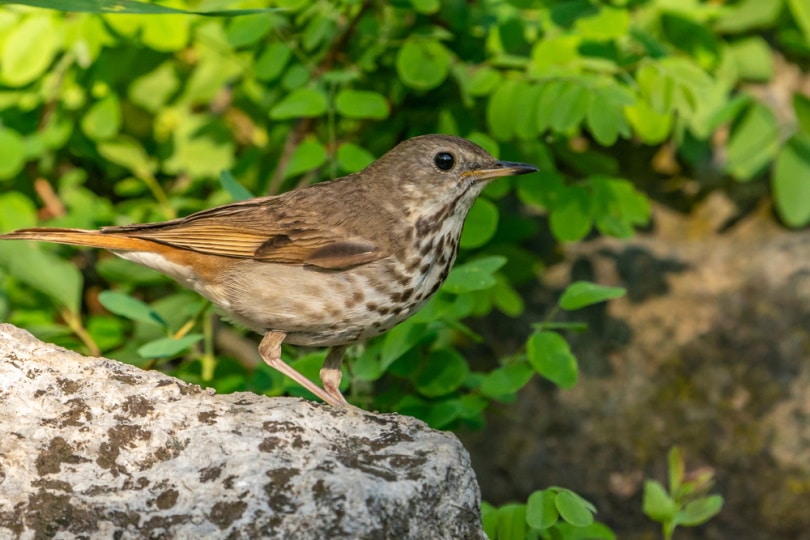
| Type | Nocturnal |
| Singing style | Whistles and warbles |
| Conservation status | Stable |
One of the most abundant bird species in Central and North America, the Hermit Thrush is a reddish-brown bird with a sweet melodious voice. These are popular songbirds in the region, always singing their whistles and warble-filled songs.
The best time to listen to their lilting singing is late evening or early morning. If you’re visiting Kentucky between early spring and late fall, you may also listen to their singing in the nighttime.
The Hermit Thrush is a low concern chirping species with a score of 6 out of 20.
9. Upland Sandpiper

| Type | Non-nocturnal |
| Singing style | Whistles and trilling |
| Conservation status | Stable |
Upland Sandpipers are the life of the spring season in Kentucky. These birds sing an ecstatic song that lifts the mood of every listener. Their song is audible during their breeding season, consisting of a beautiful melody of wild trilling and sweet whistles.
Male Upland Sandpipers typically vocalize at night, despite being a non-nocturnal bird species. So, if it’s your lucky day, you may also hear these birds’ joyous songs during daylight.
Fortunately, these birds’ population has remained stable over the last 5 decades. Yet, there is a massive decline in many states of the US, primarily due to habitat loss. Currently, Upland Sandpipers have a 10 out of 20 score on the conservation list.
10. Northern Mockingbird
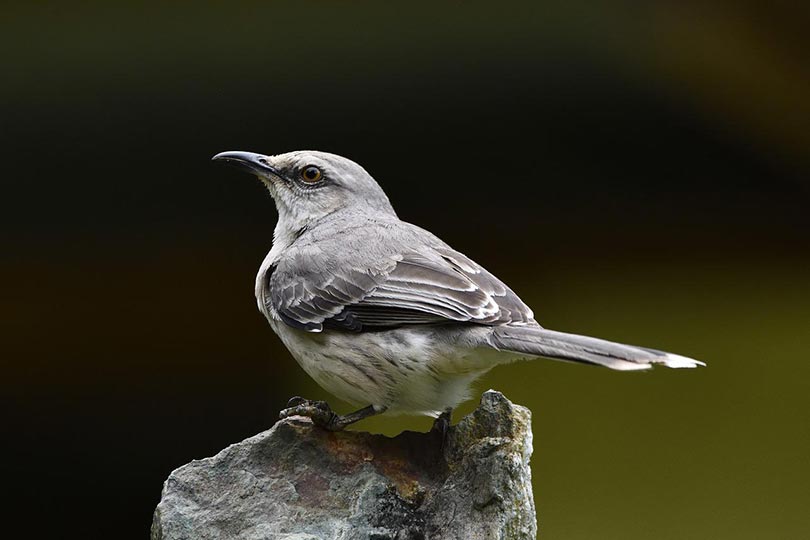
| Type | Nocturnal |
| Singing style | A jukebox consisting of about 200 different sounds |
| Conservation status | Stable |
Popular as avian jukeboxes, Northern Mockingbirds don’t sing any particular song. Instead, they can learn and sing about 200 songs from their surroundings and mimic them throughout their lives.
They take inspiration from other birds, the “tik-tok” of the clock, and even musical instruments. Then, they mix all these sounds into a song and sing them when searching for a mating partner or on full moons. This behavior is primarily seen in males.
In Kentucky, Northern Mockingbirds are spotted in open areas and forest edges. Although they are widespread in the US, their population has declined by 20% over the last 5 decades.
These birds score 8 out of 20 on the State of North America’s Birds Watch List, making them a low-concern bird species.
11. American Robin
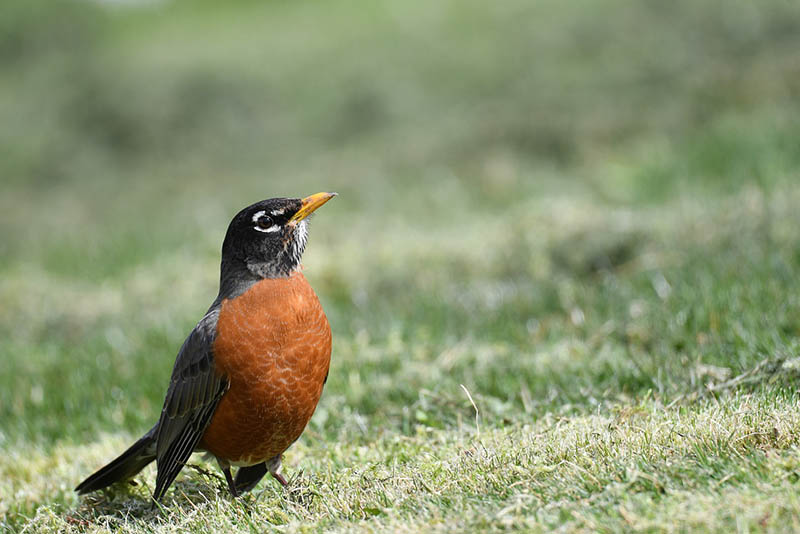
| Type | Non-nocturnal |
| Singing style | low, warbled phrases spoken at a fast pace |
| Conservation status | Stable |
American Robins are a part of the “dawn chorus,” singing a familiar song throughout their life. They deliver low, warbled phrases at a rapid speed, which often sounds like “cheerily.”
These birds sing at night, especially in spring when courtship. American Robins mostly stay in their range throughout the year, which is why they also sing at night during winter and fall.
As a Kentucky resident, you can attract these birds to your backyard and enjoy their melody the entire day and night. American Robins are abundant birds in Kentucky, with a population score of 5 out of 20.

Final Thoughts
Kentucky is home to many songbirds that are both nocturnal and non-nocturnal. Some chirp at night for communication, while others sing to find mates for courtship. From warbles and hoots to whistles and screeches, you’ll listen to various types of chirps at nighttime in the state.
Featured Image Credit: Frode Jacobsen, Shutterstock
About the Author Jeff Weishaupt
Jeff is a tech professional by day, writer, and amateur photographer by night. He's had the privilege of leading software teams for startups to the Fortune 100 over the past two decades. He currently works in the data privacy space. Jeff's amateur photography interests started in 2008 when he got his first DSLR camera, the Canon Rebel. Since then, he's taken tens of thousands of photos. His favorite handheld camera these days is his Google Pixel 6 XL. He loves taking photos of nature and his kids. In 2016, he bought his first drone, the Mavic Pro. Taking photos from the air is an amazing perspective, and he loves to take his drone while traveling.
Related Articles:
Monocular vs Telescope: Differences Explained (With Pictures)
10 Types of Hummingbirds in Arkansas (With Pictures)
8 Types of Hummingbirds in Nebraska (With Pictures)
5 Types of Hummingbirds in Idaho (With Pictures)
3 Types of Hummingbirds in Mississippi (With Pictures)
8 Types of Hummingbirds in Kansas (With Pictures)
5 Types of Hummingbirds in West Virginia (With Pictures)
5 Types of Hummingbirds in Ohio (With Pictures)
